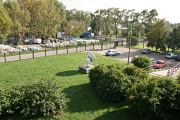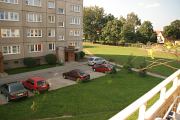Tamron AF 18-200 mm f/3.5-6.3 XR Di II LD Aspherical (IF)
11. Summary
- compact dimensions for such a wide focal lengths range,
- good image quality in the frame centre for the 18-100 mm range,
- negligible chromatic aberration in the middle of the range,
- low vignetting in the 35-200 mm range,
- slight astigmatism in the 50-200 mm range,
- very good work against bright light,
- universal focal lengths range.
Cons:
- average quality of materials used in the housing,
- lens very slow at 200 mm,
- weak image quality at 200 mm and near maximum relative aperture for other focal lengths,
- very high chromatic aberration at both ends of the range,
- distinct distortion at 18 mm,
- significant vignetting at 18 mm,
- high astigmatism at 18 mm,
- low autofocus accuracy.
I admit I am not a fan of megazoom lenses – they are, in my opinion, in contradiction with the very idea of using reflex cameras. Staying within one and the same company line-up, if you want to cover the focal range of the Tamron, tested here, it’s enough to buy two lenses with 17-50 f/2.8 and 55-200 f/4.0-5.6 parameters. We will have to pay additionally something about 300 $ but instead we get a much better fastness, an incomparably better image quality in the 17-50 mm range and a bit better in the 55-200 mm range. In my opinion the game is worth the candle, especially that the f/6.3 aperture at 200 mm is very slow and the image quality- very weak; we are forced to use f/11-16 apertures in order to get a satisfactory quality of photos. When you join such aperture values with the 200 mm focal length, which simply forces us to use exposure times at the level of 1/250 of a second and shorter, you limit the usage of the 200 mm focal length to sunny days only. Of course the situation changes when you take a tripod with you but I would prefer having two lenses than a tripod and one lens only.
Please Support UsIf you enjoy our reviews and articles, and you want us to continue our work please, support our website by donating through PayPal. The funds are going to be used for paying our editorial team, renting servers, and equipping our testing studio; only that way we will be able to continue providing you interesting content for free. |
- - - - - - - - - - - - - - - - - - - - - - - - - - - - - - - - - - - - - - - - - - - - - - - -
To be completely honest I have to admit the Tamron 18-200 mm in several places surprised us very nicely, putting e.g. the Nikkor 18-135 mm in its place. Although the Tamron is not as sharp as the Nikkor in the frame centre, it features a wider aperture range, it corrects the vignetting much better and the distortion – significantly better and its work against bright light is beyond reproach.
Sample shots:












